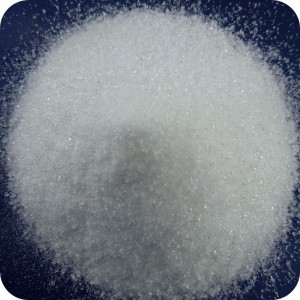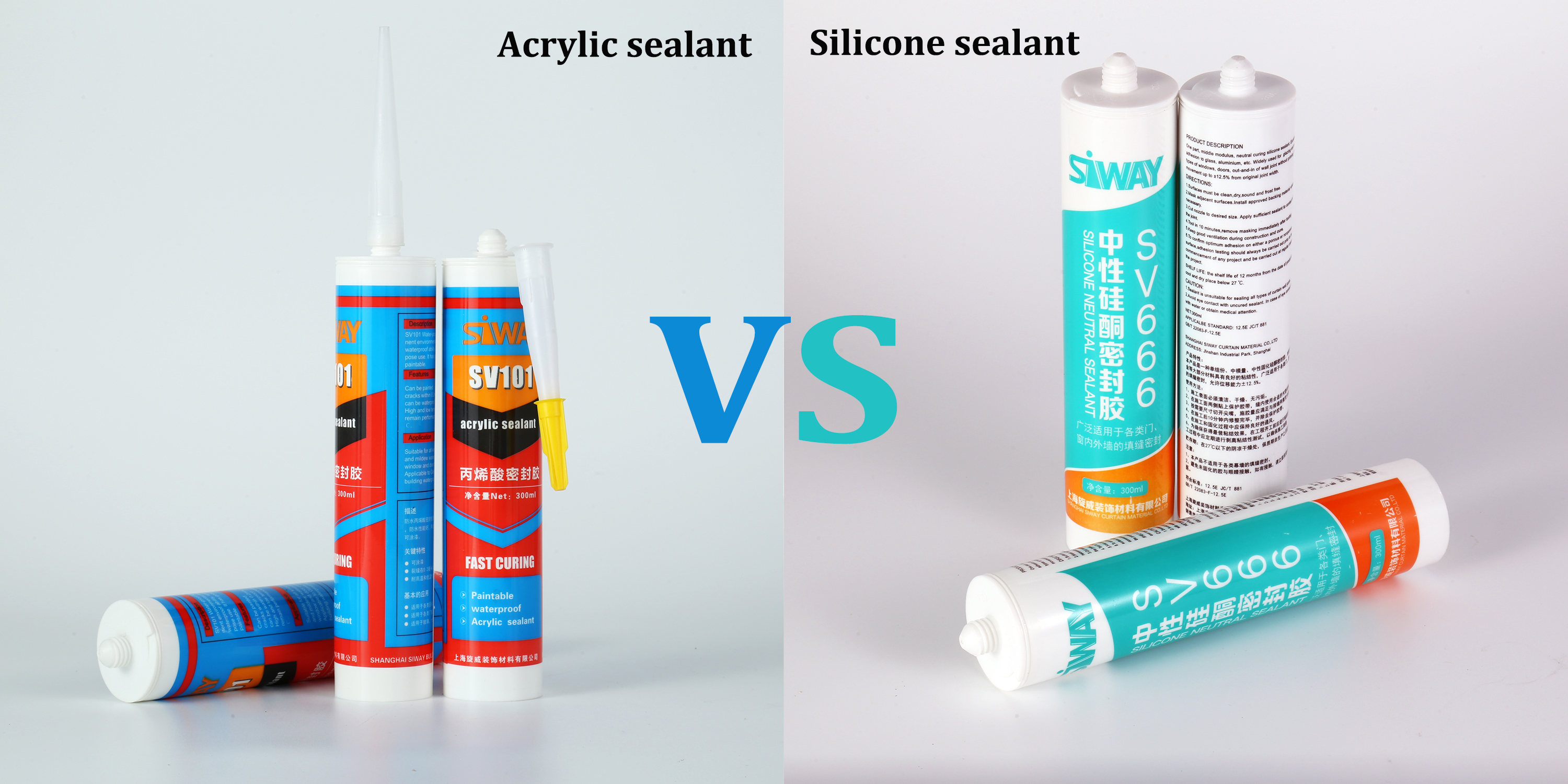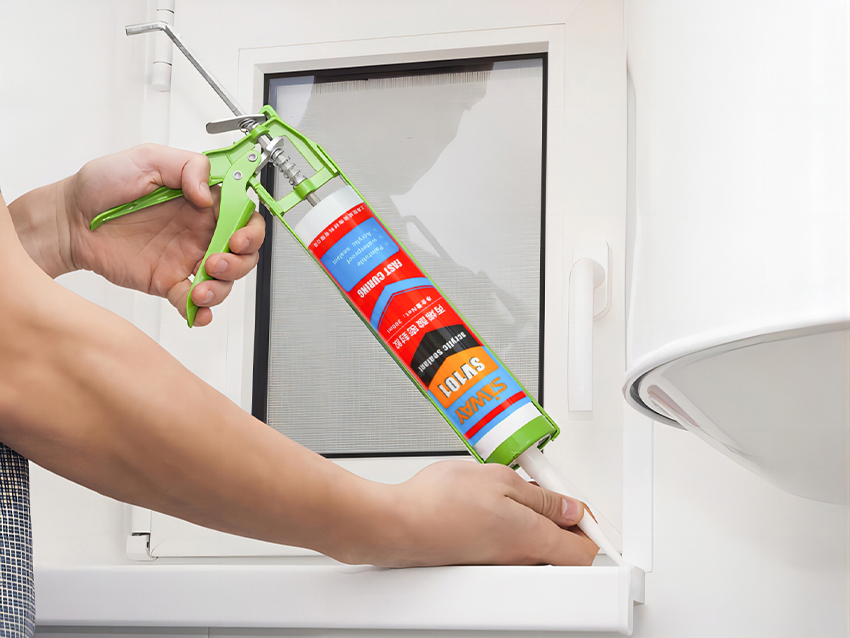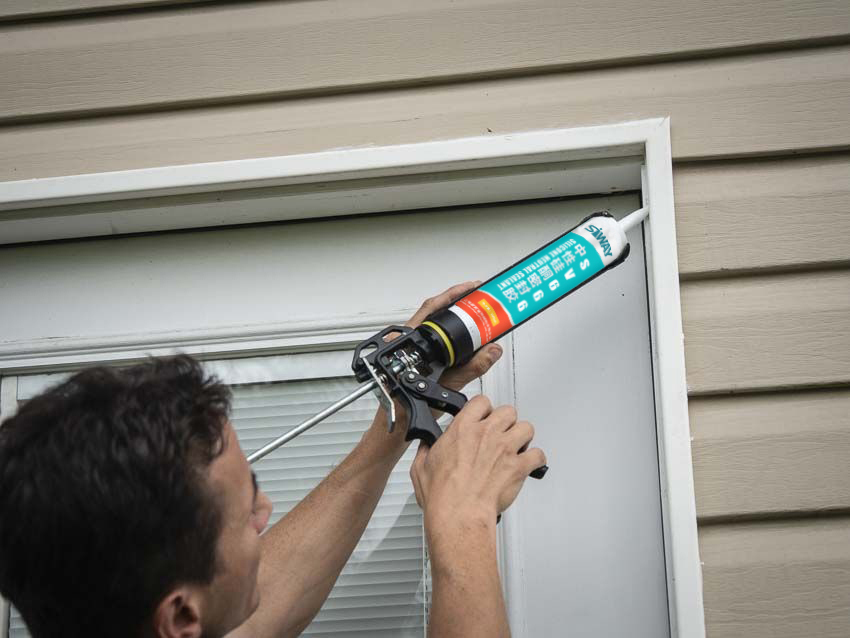Welcome to the new issue of Siway News. Recently, some friends have some doubts about the acrylic sealant and silicone sealant, and confuse the two. Then this issue of Siway News will clear up your confusion.

Silicone sealant and acrylic sealants are very similar in terms of appearance and texture. Adhesives or sealant are in almost any home, or any construction, where the goal is to fill every form of gap or sealing substrates. How to choose between acrylic or silicone sealant depend on various factor, especially the application areas where you will be applying the two substrates.
What is an acrylic sealant?
Based on an acrylic polymer, an acrylic sealant is often recognized by different names that include decorators acrylic, painters caulk, or even decorators caulk. An acrylic sealant adhesive is more traditional, and is the preferred choice when searching for an economical sealant and filler. Some also have external uses, and acrylic sealant mainly serves internal purposes. An acrylic sealant plastic is a more elastic sealant ideal for a working environment, such as cracks in masonry.

Solid Content Acrylic Polymer
What is a silicone sealant?
A silicone sealant has a basis on a silicone polymer. It is cured to form a flexible rubber that is tough and also ideal for all forms of industrial applications and home application. There are three types of silicone sealants: acetoxy cure, alkoxy cure, and oxime cure. An acetoxy cure silicone sealant is an acetic acid curing, and its vinegar-like smell recognizes it. It can be used for different forms of internal applications, like glass adhesives, windows sealing, and fish tank sealing. However, oxime cure and alkoxy cure are both neutral curing silicones. Based on different applications, we choose different type of silicone sealant. The neutral cure silicone sealant has outstanding waterproofing and weatherproof ability. It can be used for external and internal applications. In addition, the neutral curing silicone sealants can be used for more substrates than acetic acid.
Acrylic sealant vs Silicone sealant

An acrylic sealant has one main advantage that is paintability with various kinds of paints. However, the silicone sealant cannot paintability, but now many manufacturers of silicone sealant can be provided color customization services based on client’s substrates. Silicone sealants easily outperform the acrylic counterparts in other areas. For instance, silicone sealants are much more durable than acrylic sealants, as they are more flexible.
Furthermore, when apply the acrylic sealant, we have to pay attention to the weather and climate condition. Weather condition must always be preferably warm and dry if acrylic sealant is to stand the test of time and prevent the curing sealant from being washed off the joint. Again, this is not the case for silicone sealants, as they are easier to tool and finish, it has outstanding weatherproof and waterproof properties, is not affected by climate change easily.
Even after curing an acrylic sealant, its waterproofing and weather-resistant properties are inferior to silicone sealant.
To sum up, for external uses, many experts will recommend the use of silicone sealant rather than an acrylic one. The silicone has outstanding waterproof and weatherproof properties. For the paintability properties, Siway has color customization services based on the client’s substrates. It encourages our substrates match sealant perfectly.
If you still have any questions between acrylic sealant and silicone sealant. Contact us at any time.

Post time: Jul-19-2023



